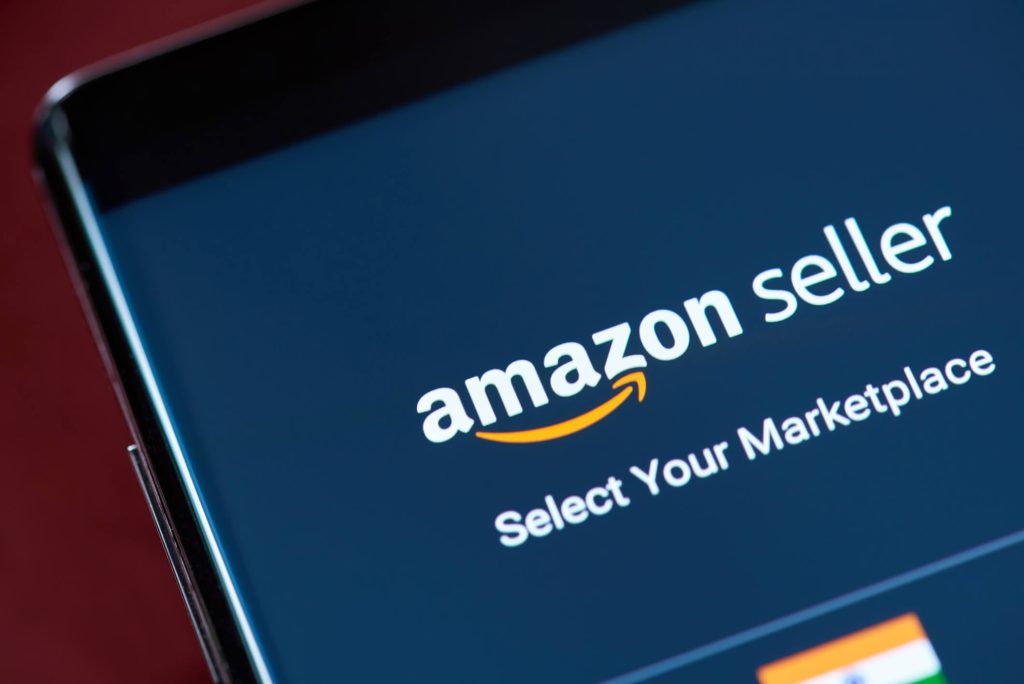In the ever-evolving world of e-commerce, Amazon has established itself as a dominant force, providing a platform for millions of sellers to reach a global customer base. However, selling on Amazon comes with its own set of costs, known as Amazon seller fees. These fees are essential for the smooth functioning of the marketplace and enable Amazon to provide a seamless experience for both sellers and customers. In this comprehensive guide, we will delve into the intricacies of Amazon seller fees in 2024, providing a breakdown of costs, strategies to minimize fees, and tips for navigating this dynamic landscape.
Overview of Amazon Seller Fees: A Breakdown of Costs
To comprehend the full scope of Amazon seller fees, it is essential to break them down into different categories. The primary fees that sellers encounter on Amazon include referral fees, fulfillment fees, storage fees, advertising fees, international selling fees, subscription fees, and other miscellaneous fees. Each of these fees plays a crucial role in determining the overall cost of selling on Amazon and should be carefully considered when formulating a pricing strategy.
Commission Fees: How Amazon Charges for Selling on their Platform

Commission fees are the primary source of revenue for Amazon. These fees are a percentage of the total sale price and vary depending on the category of the product being sold. In 2024, it is expected that Amazon will continue to charge commission fees based on the category, with some categories having higher rates than others. It is essential for sellers to be aware of these fees and factor them into their pricing strategy to ensure profitability.
Fulfillment Fees: Exploring the Costs of Amazon’s Fulfillment Services
One of the key advantages of selling on Amazon is the option to utilize their fulfillment services, known as Fulfillment by Amazon (FBA). FBA allows sellers to store their inventory in Amazon’s warehouses and have Amazon handle the packaging, shipping, and customer service. However, these services come at a cost. Fulfillment fees are charged based on the size and weight of the product, as well as the time it spends in Amazon’s warehouses. In 2024, it is expected that Amazon will continue to refine their fulfillment fee structure to optimize efficiency and provide competitive pricing for sellers.
Storage Fees: Managing Inventory Costs on Amazon
As sellers utilize Amazon’s FBA services, they must also consider the cost of storing their inventory in Amazon’s warehouses. Storage fees are charged based on the volume of space occupied by the seller’s products. In 2024, it is anticipated that Amazon will continue to encourage sellers to maintain optimal inventory levels by implementing storage limits and charging higher fees for long-term storage. Sellers should carefully manage their inventory to avoid unnecessary storage fees and ensure a smooth flow of products.
Advertising Fees: Maximizing Sales with Amazon Advertising
Amazon offers various advertising options to help sellers increase their visibility and drive sales. Advertising fees are charged when a customer clicks on an ad and makes a purchase. In 2024, it is expected that Amazon will continue to invest in their advertising platform, providing sellers with more advanced targeting options and analytics. To maximize the return on investment from advertising fees, sellers should carefully analyze their advertising campaigns, optimize their product listings, and monitor their performance regularly.
Referral Fees: Calculating the Costs of Selling in Different Categories
Referral fees are one of the most significant costs that sellers incur on Amazon. These fees are a percentage of the item’s sale price and vary depending on the category in which the product is listed. In 2024, it is expected that Amazon will continue to adjust referral fees to align with market trends and maintain a competitive edge. Sellers must stay updated with these changes to accurately calculate their profit margins and make informed pricing decisions.
Subscription Fees: Evaluating the Benefits of Amazon’s Subscription Plans

Amazon offers sellers the option to subscribe to various plans, such as the Professional Selling Plan or the Individual Selling Plan. Each plan has its own set of benefits and costs. The Professional Selling Plan, for instance, requires a monthly subscription fee but offers additional features and lower referral fees. In 2024, sellers should assess their sales volume and business needs to determine whether a subscription plan is beneficial and cost-effective for their operations.
International Selling Fees: Expanding Your Business Globally
With Amazon’s global reach, sellers have the opportunity to expand their businesses beyond their domestic markets. However, selling internationally comes with its own set of fees. These fees can include referral fees, fulfillment fees, and currency conversion fees. In 2024, as cross-border trade continues to grow, sellers should carefully evaluate the potential of international markets and consider the associated costs before venturing into new territories.
Other Miscellaneous Fees: Uncovering Hidden Costs on Amazon
In addition to the aforementioned fees, sellers may encounter various miscellaneous fees on Amazon. These fees can include long-term storage fees, removal fees for unsold inventory, return processing fees, and more. It is crucial for sellers to familiarize themselves with these potential costs and incorporate them into their financial planning to avoid any surprises that may impact their profitability.
Minimizing Amazon Seller Fees: Strategies for Cost Optimization
While Amazon seller fees are an inevitable part of selling on the platform, there are several strategies that sellers can employ to minimize these costs and maximize their profitability. Let’s explore some effective strategies for cost optimization in 2024.
- Optimize Product Pricing: Carefully analyze the market and competition to set competitive prices that factor in all fees and expenses. Consider utilizing dynamic pricing tools to adjust prices in real-time based on market conditions.
- Streamline Fulfillment: Optimize your inventory management to minimize storage fees and reduce the time products spend in Amazon’s warehouses. Utilize tools and software to forecast demand accurately and maintain optimal inventory levels.
- Leverage Multi-Channel Selling: Expand your sales channels beyond Amazon to diversify your revenue streams and reduce dependency on a single platform. By selling on multiple platforms, you can spread out the associated fees and potentially negotiate better terms.
- Optimize Advertising Campaigns: Continuously monitor and optimize your advertising campaigns to ensure maximum return on investment. Utilize Amazon’s advertising analytics to identify underperforming campaigns and make data-driven adjustments.
- Negotiate with Suppliers: Build strong relationships with your suppliers and negotiate favorable terms to reduce the cost of goods sold. Bulk purchasing and long-term contracts can often lead to better pricing and lower fees.
- Utilize Amazon’s Fee Calculators: Amazon provides fee calculators that allow sellers to estimate the fees associated with their products. Utilize these tools to understand the impact of fees on your profitability and make informed decisions.
- Monitor Fee Changes: Stay updated with Amazon’s fee structure and policy changes. Regularly review your fees and adjust your pricing strategy accordingly to ensure profitability.
- Optimize Product Listings: Invest time and effort in optimizing your product listings to improve visibility and conversion rates. Utilize relevant keywords, high-quality images, and compelling product descriptions to attract customers and increase sales.
- Utilize Amazon’s Promotional Tools: Take advantage of Amazon’s promotional tools, such as Lightning Deals and Coupons, to increase sales and visibility. These tools can help offset the cost of fees by driving additional traffic and conversions.
- Seek Professional Advice: Consider consulting with e-commerce experts or hiring a professional Amazon consultant to gain insights and guidance on fee optimization strategies specific to your business.
Navigating Amazon Seller Fees for Success in 2024
As the e-commerce landscape continues to evolve, it is crucial for sellers to stay informed and adapt their strategies to navigate Amazon seller fees successfully. By understanding the breakdown of costs, implementing cost optimization strategies, and staying updated with Amazon’s policies, sellers can position themselves for success in 2024 and beyond.
Frequently Asked Questions about Amazon Seller Fees in 2024
Q.1: Are Amazon seller fees the same for all sellers?
Answer: No, Amazon seller fees vary depending on factors such as the category of the product, fulfillment method, and advertising options chosen by the seller.
Q.2: Can I negotiate Amazon seller fees?
Answer: While Amazon’s fee structure is generally non-negotiable, sellers can negotiate with suppliers for better pricing on products, which can indirectly impact their overall fees.
Q.3: How often do Amazon seller fees change?
Answer: Amazon periodically reviews and adjusts its fee structure to align with market trends and maintain a competitive marketplace. Sellers should stay updated with these changes to ensure accurate pricing and profitability.
Q.4: Can I avoid Amazon seller fees altogether?
Answer: Amazon seller fees are an essential part of selling on the platform and cannot be avoided. However, sellers can employ strategies to minimize these fees and optimize their profitability.
Q.5: Are there any hidden fees on Amazon?
Answer: Amazon is transparent about its fee structure, and sellers can utilize fee calculators and tools provided by Amazon to estimate their costs accurately. However, sellers should be aware of potential additional fees, such as long-term storage fees or fees for certain optional services.
Conclusion
In conclusion, understanding Amazon seller fees in 2024 is crucial for sellers looking to thrive in the competitive e-commerce landscape. By comprehending the breakdown of costs, implementing cost optimization strategies, and staying updated with Amazon’s policies, sellers can navigate the dynamic world of Amazon seller fees successfully. By carefully managing their pricing, inventory, advertising campaigns, and supplier relationships, sellers can minimize fees and maximize profitability. With the right strategies and a proactive approach, sellers can position themselves for success on Amazon in 2024 and beyond.
